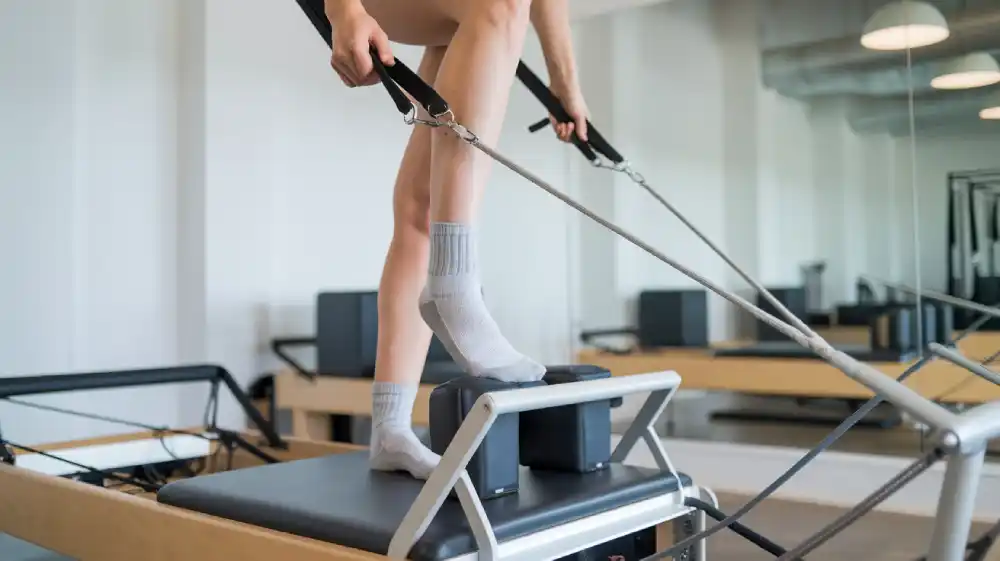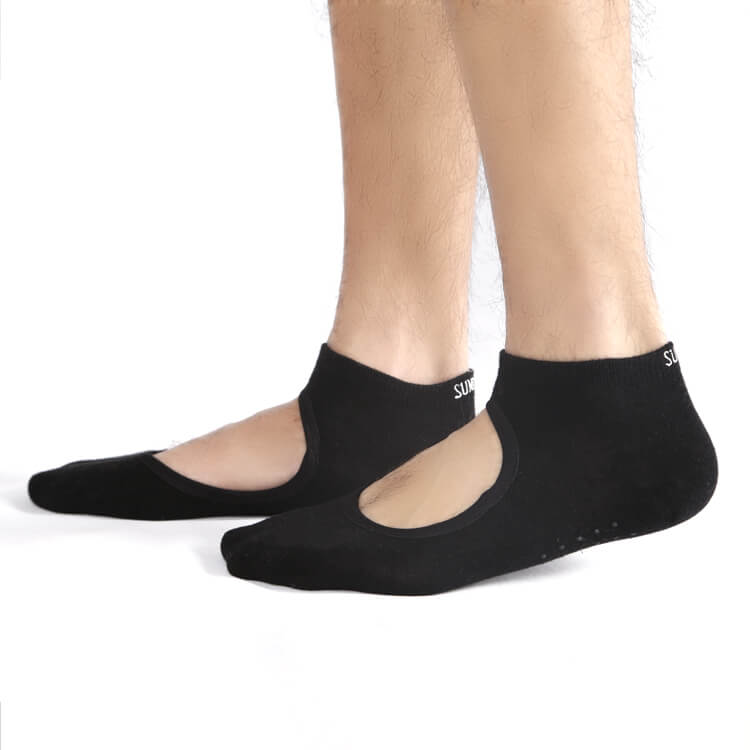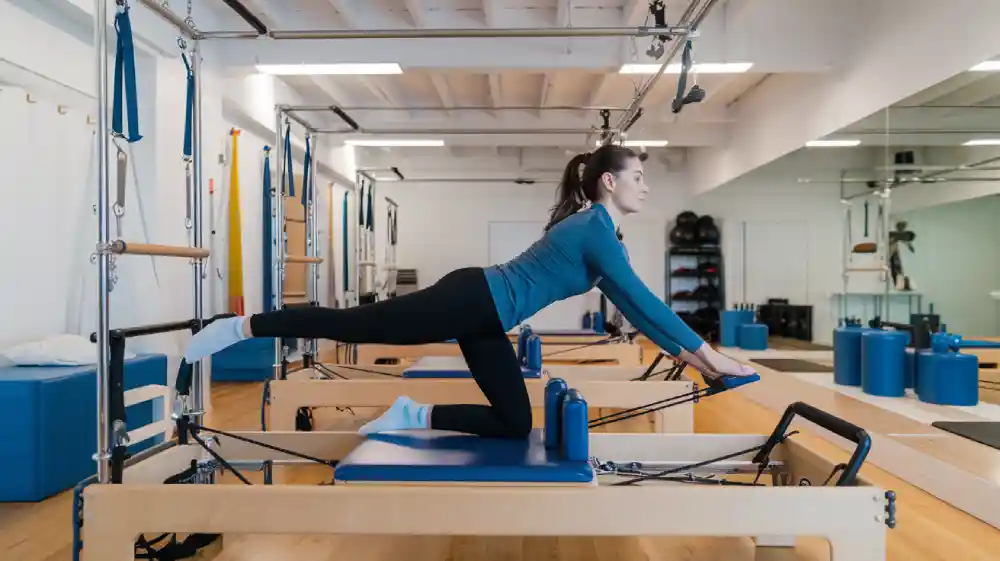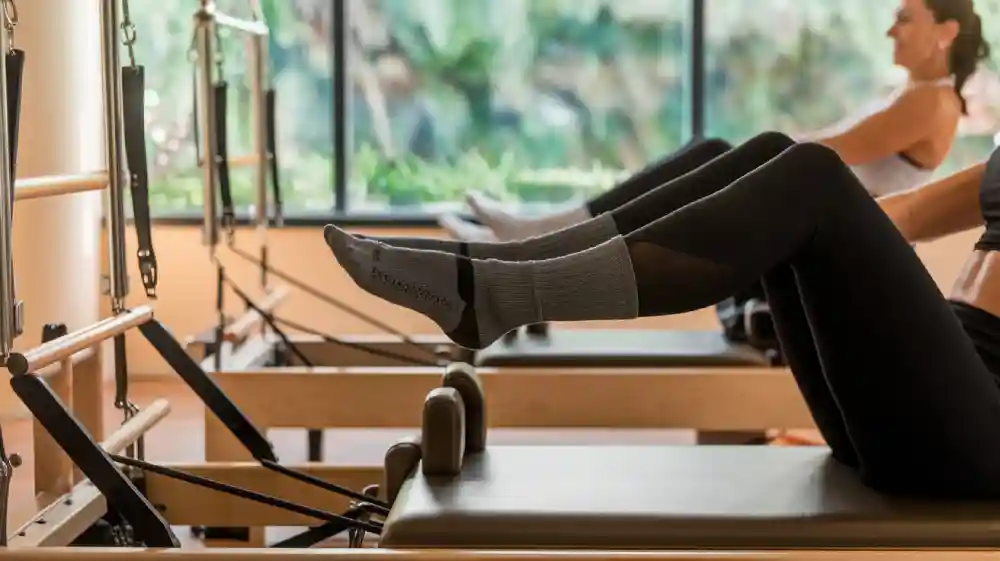
When it comes to Pilates, stability, control, and precision are key—but what if a simple accessory could take your practice to the next level? Grip socks, once considered optional, have now become an essential tool for many Pilates enthusiasts. These unassuming socks provide far more than just comfort—they offer enhanced grip, prevent slipping, and help you maintain proper alignment, making your workout safer and more effective. So, are grip socks really a must-have, or are they just another trend? If you’re wondering whether they’re essential for your practice, keep reading to find out how they can make a big difference in your Pilates routine—and whether they’re the right choice for you.
Factors to Consider: Should You Choose Grip Socks for Pilates?
Before jumping into the world of grip socks, it’s essential to evaluate your personal practice and environment to determine whether they’re the right fit for you.
- Your Level of Experience and Familiarity with Pilates
If you’re new to Pilates, grip socks can offer a boost in confidence. They provide extra stability, which can be especially helpful when mastering foundational movements. For seasoned practitioners, the added traction can enhance control and precision in more advanced exercises, giving you the ability to refine your technique.
- The Type of Pilates You Practice: Mat vs. Reformer
The type of Pilates you engage in can significantly influence whether grip socks are necessary. For mat Pilates, the floor’s surface plays a crucial role in your ability to maintain balance. Grip socks help you stay grounded during leg lifts or planks. On the other hand, if you’re practicing reformer Pilates, the elevated, often slippery surfaces can benefit from extra traction, ensuring your feet stay in the correct position for more dynamic movements.
- The Importance of Studio or Home Practice Environment
Where you practice matters. In shared studio spaces, grip socks not only enhance safety but also keep your feet protected from communal mats, which can harbor bacteria. At home, the condition of your flooring plays a pivotal role. If you have hardwood floors or slippery surfaces, grip socks will reduce the chances of slipping during movements, providing the right foundation for every exercise.
- Health and Medical Conditions
For individuals with specific health concerns such as diabetes, poor circulation, or foot injuries, grip socks can offer extra protection and support. The added cushion and warmth can help improve comfort, while the grip prevents unnecessary strain on your feet and ankles. However, if you suffer from skin sensitivities or allergies, it’s vital to select socks made from hypoallergenic or natural fibers to avoid irritation.
- Personal Comfort Preferences
Ultimately, comfort is key. Some Pilates enthusiasts swear by the freedom of practicing barefoot, enjoying the full connection with the mat. If you prefer the feeling of socks, grip socks provide a perfect compromise, offering the best of both worlds—comfort and security. The choice between bare feet or socks often comes down to personal preference, but those seeking enhanced support and traction will likely find grip socks indispensable for a more focused and injury-free workout.

Types of Grip Socks for Pilates
When choosing grip socks for Pilates, several factors such as style, material, and length are crucial for enhancing comfort and performance during your practice.
- Style: Full-Foot vs. Split-Toe
Full-Foot Socks: These provide complete coverage, ensuring a snug fit that enhances stability and control. They are ideal for those who prefer a traditional sock feel.
Split-Toe Socks: Offering a more barefoot-like experience, these allow for greater toe flexibility and a closer connection to the mat. This style is suitable for those who prioritize freedom of movement.
- Material: Importance of Fabric
The choice of material significantly impacts comfort and performance:
Cotton: Soft and breathable but can retain moisture, affecting grip.
Synthetic Blends (e.g., Spandex, Nylon): These materials wick moisture away, keeping feet dry and providing better stretch during workouts.
Infused Fabrics: Some premium options include antimicrobial properties from materials like copper or silver to minimize odors.
- Length and Fit: Ankle to Knee-High Options
Ankle-Length: Lightweight and allows full movement; great for agility.
Crew-Length: Offers a balance of warmth and freedom.
Knee-High: Provides extra coverage and compression, improving circulation and reducing muscle fatigue during intense routines.
- Compression Features
Many grip socks incorporate compression technology, which supports circulation and reduces swelling. This can lead to faster muscle recovery, making them beneficial for those engaging in rigorous Pilates sessions.
Grip Socks for Pilates: How They Enhance Your Performance?
Specialized socks can truly elevate your Pilates practice, helping you address common challenges and maximize your potential. From stability to injury prevention, here’s how they can boost your workout.
Slips and Loss of Control During Pilates
One of the main benefits of grip socks is their ability to prevent slipping during dynamic movements. The rubberized soles provide traction on various surfaces, including Pilates mats and reformers. This increased grip allows practitioners to maintain stability and control, reducing the likelihood of losing balance during transitions or exercises. As a result, you can focus more on your form and technique, leading to improved performance.
Foot Discomfort and Fatigue
Long Pilates sessions can lead to foot fatigue and discomfort. Grip socks are designed with cushioning that alleviates pressure on sensitive areas of the feet, allowing you to engage in longer workouts without distraction. This added comfort helps maintain proper posture and alignment throughout your practice.
Adapting to Pilates Equipment
Pilates equipment, such as reformers and chairs, requires precise movements and proper foot placement. Some machines, especially those with hard or metal surfaces, can make it difficult to maintain stability. Socks with textured soles ensure you maintain control over your foot positioning, whether you’re working on the reformer or using the footbar. This added grip makes it easier to transition between movements and stay in proper alignment, even when using various equipment.
Injury Prevention
The solid grip offered by these socks reduces the risk of slips that can lead to injuries such as twisted ankles or muscle strains. By stabilizing your stance, grip socks allow you to perform exercises with confidence, minimizing accidents during workouts. Additionally, they provide joint support that can help reduce peak joint loading during dynamic movements.
Confidence Boost
When you feel secure in your footing, it boosts your confidence in trying new movements or refining existing ones. Grip socks enable you to explore advanced exercises without hesitation, enhancing your overall Pilates journey. This psychological benefit is crucial for personal growth in any fitness practice.

The Hygiene Factor: Why Grip Socks Are a Must in Pilates Studios?
Pilates studios are busy spaces, with equipment and mats shared by multiple participants throughout the day. While most studios prioritize cleanliness, these environments are still at risk for harboring bacteria and germs. Wearing socks specifically designed for Pilates not only enhances your practice but also offers significant hygiene advantages that can help keep your feet safe and your workout space cleaner.
- The Hygiene Benefits in Shared Environments
Mats, reformers, and other Pilates equipment are touched by many people each day, which increases the risk of germs and bacteria building up. Wearing socks limits direct contact between your skin and the surfaces used by others, reducing your exposure to harmful pathogens. This is particularly important in a studio environment where mats are often used by multiple people and may not be cleaned immediately after each session. In addition, wearing grip socks helps prevent issues such as staining from red nail polish, which can be difficult to remove from equipment
- Protecting Your Feet from Germs, Bacteria, and Foot Conditions
Feet are susceptible to conditions like athlete’s foot, plantar warts, and other fungal infections, which are easily spread in shared environments. Pilates mats and machines can carry these germs, especially when they aren’t cleaned thoroughly between uses. Wearing socks creates a protective barrier, reducing the risk of infections. Many of these socks are made from antimicrobial materials, which can help prevent bacterial growth, keeping your feet safer as you move through your routine. Furthermore, it helps avoid any embarrassing exchanges related to foot hygiene among trainees, contributing to a more pleasant and professional atmosphere in the studio.
- How Socks Contribute to a Cleaner, Safer Practice
In addition to providing hygiene protection, socks also help maintain a cleaner practice environment. They prevent sweat, oils, and dirt from transferring from your feet to the mat, reformer, or other equipment. This reduces the frequency of deep cleaning required and ensures that all participants have a more hygienic experience. By wearing socks, you help promote a safer, more comfortable environment for both yourself and fellow practitioners.

How to Select Grip Socks?
When selecting the right socks for Pilates, focus on key features that will enhance comfort, stability, and performance.
- Strong Grip
The main function of these socks is to offer effective traction. Look for socks with a non-slip design on the bottom that provides stable friction across various surfaces, such as mats and reformers. A strong grip is essential to prevent slipping, ensuring that you maintain control and stability, especially during balance or high-intensity exercises.
- Breathable Material
Breathability is crucial for maintaining comfort throughout your practice. Choose socks made from breathable fabrics like cotton, bamboo, or moisture-wicking materials. These materials help keep your feet dry, reduce sweat, and prevent the buildup of odors and bacteria, all of which improve overall comfort and hygiene during your workout.
- Comfortable Fit
Comfort is key to a successful Pilates session. Ensure the socks fit well—not too tight to restrict circulation, and not too loose to cause discomfort or distraction. Opt for soft materials that offer flexibility and cushioning. Some designs even include arch support or padding, providing extra comfort and reducing foot fatigue, allowing you to focus fully on your practice.
The Pros and Cons: Different Views on Grip Socks in Pilates
As with any fitness accessory, there are varying opinions on the necessity of using socks with non-slip soles in Pilates. While many practitioners find them indispensable, others believe they’re not essential. Here’s a look at both perspectives.
- Supporters of Grip Socks: Why They Swear by Them
For many, these specialized socks are considered a must-have for their Pilates practice. Advocates argue that they provide crucial stability, particularly during movements where balance is key. The textured soles enhance traction, preventing slipping on mats or floors, which helps maintain control and improves posture. Additionally, they offer hygiene benefits, acting as a barrier against germs and bacteria in shared studio environments. For those with foot issues such as poor circulation or plantar fasciitis, these socks can provide added comfort and support, reducing foot fatigue and offering extra protection during longer sessions.
- Critics of Grip Socks: Arguments Against Their Necessity
However, there are those who feel that socks with grips aren’t necessary for a fulfilling Pilates experience. Some critics argue that Pilates is all about connecting with your body and the mat, and being barefoot allows for a more direct connection. Without the extra layer, they can feel more grounded, which helps with balance and focus. Additionally, some practitioners find that socks can feel restrictive, particularly during high-intensity movements where they may limit flexibility or the ability to fully spread the toes. For these individuals, the tactile experience of feeling the mat beneath their feet is a core part of their practice, making socks an unnecessary accessory.
Conclusion: Should You Make the Switch to Grip Socks for Pilates?
Grip socks offer enhanced stability, prevent slipping, and provide extra foot support, making them a great choice for Pilates practitioners, especially in studio environments or when using equipment. They also promote hygiene and comfort during long sessions. If you’re looking for better control, injury prevention, or a cleaner practice, these socks are a smart addition to your routine.
Interested in high-quality grip socks for Pilates or looking for custom options for your brand? Contact us today to learn more about our products and services!
FAQs
Q1. Are Grip Socks Necessary for Pilates, or Can Regular Socks Do the Job?
Grip socks are advantageous because their textured soles prevent slipping, providing better stability and traction during exercises. While regular socks may work in some situations, they lack the control and support needed on mats or equipment. For improved grip, injury prevention, and posture, grip socks are the better option.
Q2. Do You Need to Wear Shoes During Pilates Sessions?
Shoes are generally not required in Pilates and are often discouraged. Practicing barefoot allows for greater foot mobility and a better connection to the mat, which is essential for balance and alignment. However, if you’re in a shared studio or on slippery surfaces, grip socks are a great alternative for traction without the bulk of shoes.
Q3. How do I clean grip socks, and how often should I wash them?
Grip socks should be machine washed in cold water with similar colors and air-dried. To prolong their lifespan, avoid putting them in the dryer. Washing them after each use is recommended, especially if you’ve been practicing in a shared environment to maintain hygiene. Click to know how to wash grip socks.
Q4. Are there eco-friendly options for grip socks?
Yes, many brands now offer eco-friendly grip socks made from sustainable materials like organic cotton, bamboo, and recycled fibers. These options not only provide comfort and performance but also minimize environmental impact.
Q5. Can I wear grip socks if I have sensitive skin or foot allergies?
For those with sensitive skin or allergies, it’s crucial to select grip socks made from hypoallergenic or natural materials, such as organic cotton or bamboo. Many brands create socks that are free from synthetic dyes and chemicals, ensuring a safer choice for individuals with skin sensitivities.
Q6. Can I customize grip socks for my Pilates brand?
Absolutely! If you’re a business looking to offer unique grip socks to your clients, we offer custom options. Contact us to explore our services and find the perfect design for your brand’s needs!
